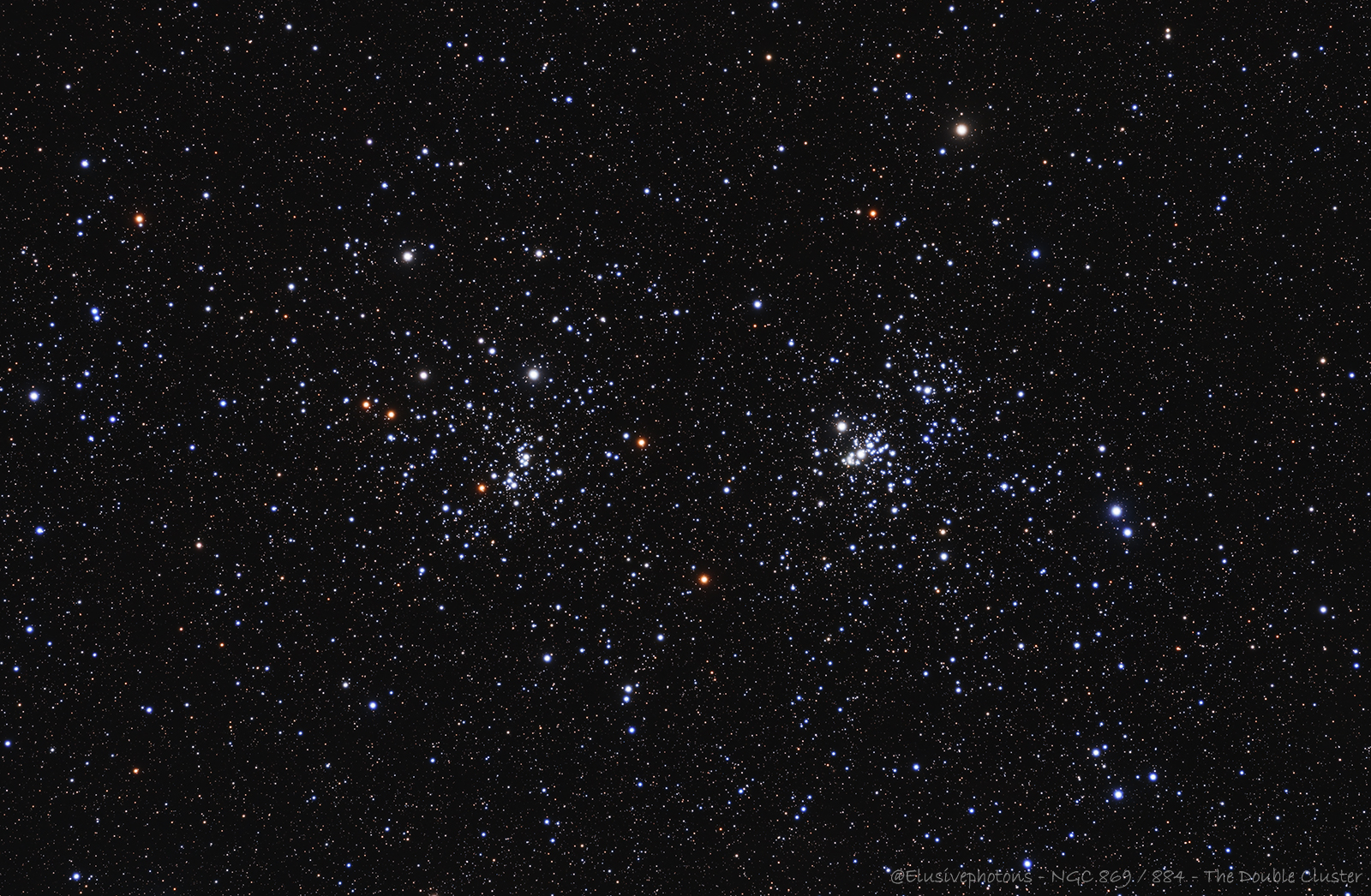Date:
October 11th - 2024
•
Total Exposure:
150 x 2 minutes (5hrs)
About This Image
Gear:
Telescope: Stellarvue SVX130T-R
Mount: Software Bisque Paramount MX
Camera: Player One Poseidon-C Pro
Filter: Optolong L-Quad 2"
Accessories: 3.5" Feathertouch • Stellarvue SFFR .72
Guiding: Player One FHD-OAG MAX • Player One Ceres 462M • PHD2
Software: Photoshop • PixInsight • TheSkyX • Starkeeper Voyager
Description:
The Double Cluster in Perseus is a breathtaking celestial spectacle, consisting of two open star clusters known as NGC 869 and NGC 884. These cosmic siblings, located approximately 7,500 light-years away from Earth, are a dazzling sight even to the naked eye, appearing as a hazy patch of light in the night sky[1][2]. What makes this pair truly remarkable is their youth - both clusters are estimated to be only about 14 million years old, mere infants in astronomical terms[2]. This youthful exuberance is reflected in the clusters' stellar population, which is dominated by hot, blue-white supergiant stars that shine with a luminosity up to 50,000 times that of our Sun[3].
Delving deeper into the Double Cluster reveals a treasure trove of astronomical wonders. Each cluster contains several hundred stars, with NGC 869 boasting a mass of 4,700 solar masses and NGC 884 weighing in at 3,700 solar masses[2]. However, the visible stars are just the tip of the cosmic iceberg. The clusters are surrounded by an extensive halo of stars, bringing the total mass of the complex to at least 20,000 solar masses[2]. This makes the Double Cluster a significant feature in the Perseus arm of our Milky Way galaxy, offering astronomers a unique opportunity to study star formation and evolution in a relatively young stellar environment.
The Double Cluster has captivated stargazers for millennia, with its first recorded observation dating back to 130 BCE by the Greek astronomer Hipparchus[4]. Despite its prominence and beauty, it curiously escaped inclusion in Charles Messier's famous catalog of deep-sky objects[2]. Today, the Double Cluster remains a favorite target for amateur astronomers and astrophotographers alike. When observed through binoculars or a small telescope, the clusters reveal their true splendor, with NGC 884 (the easternmost cluster) showcasing a scattering of red supergiant stars among its blue-white brethren, creating a stunning color contrast that hints at the complex stellar evolution taking place within these cosmic nurseries[3][1].
Sources:
[1] focusnordic.com/inspiration/binoculars-astronomy/
[2] en.wikipedia.org/wiki/Double_Cluster
[3] ualr.edu/tv/2017/11/01/november-feature_perseus_double_cluster/
[4] astronomy.com/science/101-must-see-cosmic-objects-the-double-cluster/
Distance: 7,500 light-years
Size: 500 light-years
|



